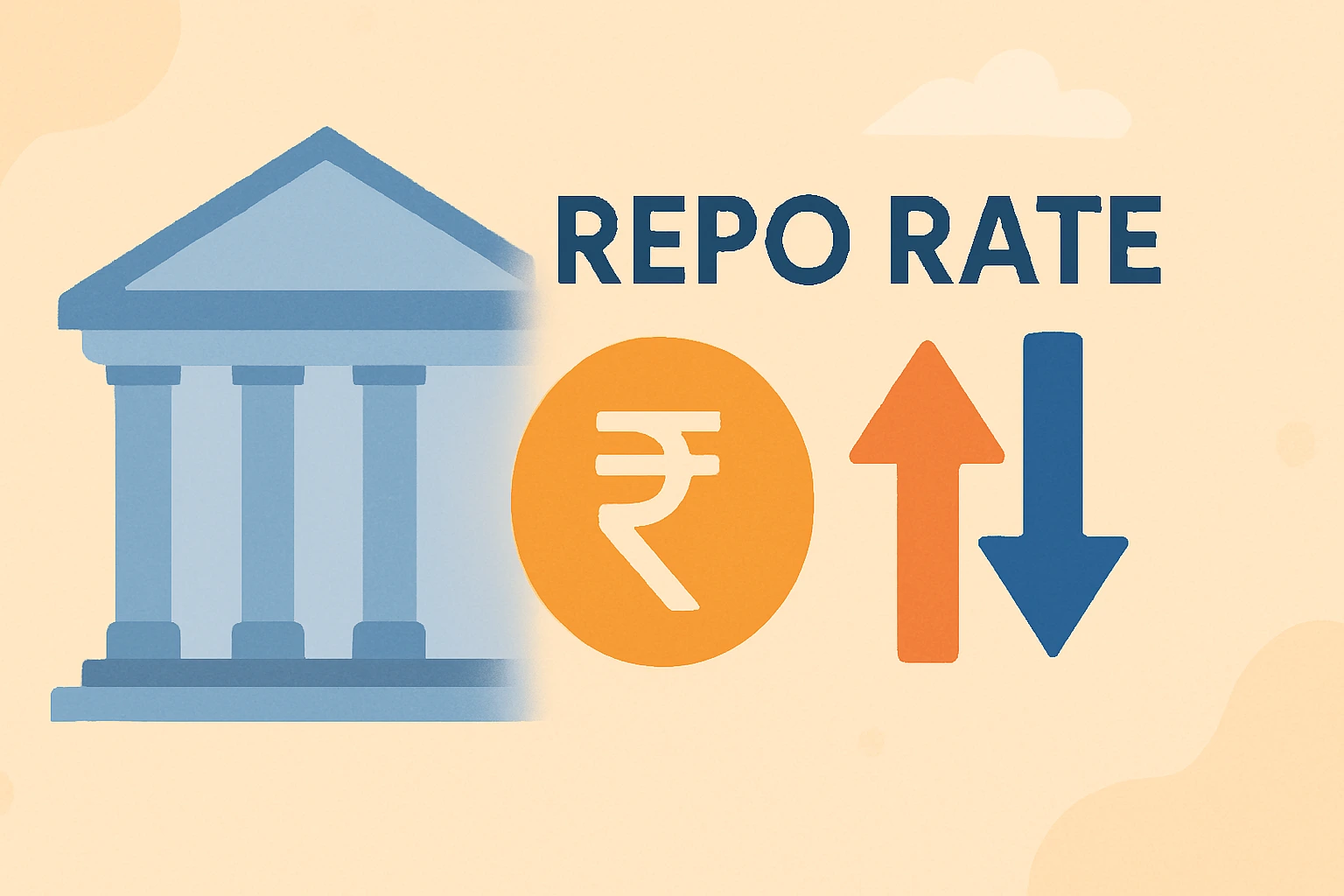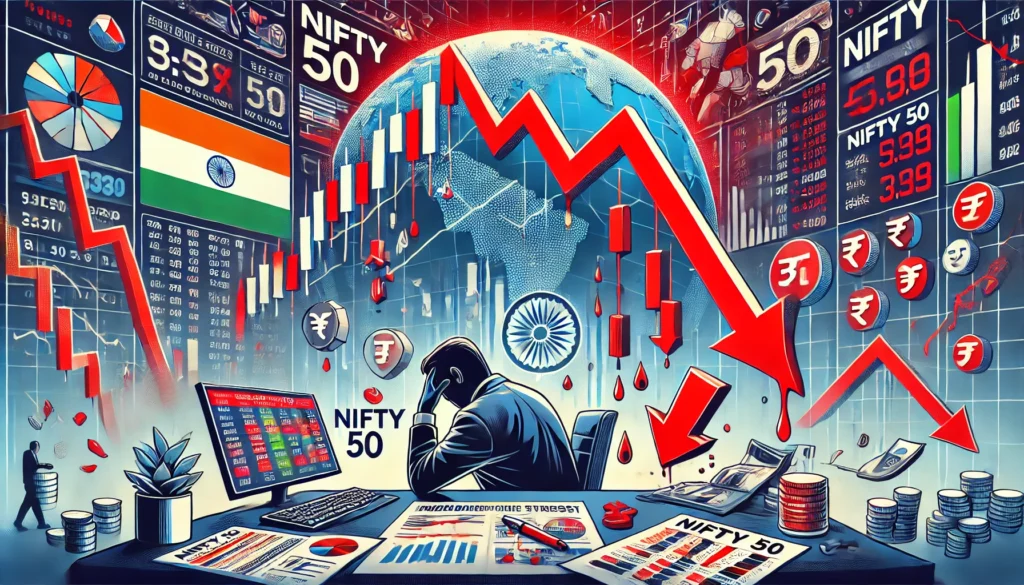If you’ve ever heard the terms Repo Rate and Reverse Repo Rate in the news and felt confused don’t worry! You’re not alone. These are important banking terms, and in this article, we’ll explain them in the simplest way possible.

1. What is Repo Rate?
Repo Rate is an acronym for “Repurchase Rate.” It is the interest rate at which commercial banks receive short-term loans from the Reserve Bank of India (RBI)
Why does the RBI give loans to banks? Banks occasionally run out of money, just as people take out loans when they need money. Thus, they take out a loan from the RBI, and the interest they pay on this loan is known as the Repo Rate.
Current Repo Rate (as of August 6, 2025): 5.50%
Source: Reserve Bank of India
Real-Life Example:
Assume that HDFC Bank requires ₹1000 crores to continue operating on a daily basis. At the current repo rate of 5.50%, it borrows this sum from the RBI. It later repays the money plus interest. The bank may raise loan interest rates for consumers like you and me if the repo rate rises because borrowing becomes more expensive for the bank.
Why It Matters:
- Higher repo rate = higher home loan/EMI interest
- Lower repo rate = cheaper loans for individuals and businesses
2. What is Reverse Repo Rate?
The reverse repo rate is the opposite. The RBI borrows funds from commercial banks at this rate.
Why would the RBI take out bank loans? The economy can occasionally have too much money floating around. The RBI pays interest to banks and provides a safe haven for their excess funds in order to curb inflation. The Reverse Repo Rate is the name given to this interest rate.
Current Reverse Repo Rate (as of August 6, 2025): 3.35%
Real-Life Example:
Think about how State Bank of India has extra money. It might rather keep the money with the RBI for safety than lend it to customers. Banks are more likely to do this if the Reverse Repo Rate is good, which helps the RBI control the amount of money in the market.
Why It Matters:
- Helps control inflation
- Encourages banks to save rather than lend during risky times
3. How the Repo Rate and the Reverse Repo Rate Affect Each Other
The two rates are like two sides of the same coin. When the RBI changes the repo rate, it usually also changes the reverse repo rate, but it keeps a gap between the two.
Example of the Relationship:
If inflation is going up, the RBI might raise the Repo Rate to make borrowing more expensive and cut back on spending. At the same time, it might also raise the Reverse Repo Rate to get banks to put money in with the RBI instead of lending it out.
How This Affects You:
- When the repo rate goes up, EMIs may go up.
- When the reverse repo rate goes up, FD and savings interest may go up.
- Lower repo rate means cheaper loans, which helps the economy grow.
Quick Comparison Table
| Feature | Repo Rate | Reverse Repo Rate |
|---|---|---|
| Definition | RBI lends to banks | RBI borrows from banks |
| Effect | Affects loan and EMI rates | Controls inflation |
| Current Rate (Aug 2025) | 5.50% | 3.35% |
Also read: What is GDP?
Conclusion
If you know what Repo and Reverse Repo Rates are, you can understand news stories, changes in loan interest rates, and RBI rules. These tools help the RBI control the economy’s growth, inflation, and the amount of money in the system. You’ll be better able to handle your money if you stay up to date!




Pingback: What is CRR and SLR? Why Banks Must Keep Money with RBI - ProsperPocket